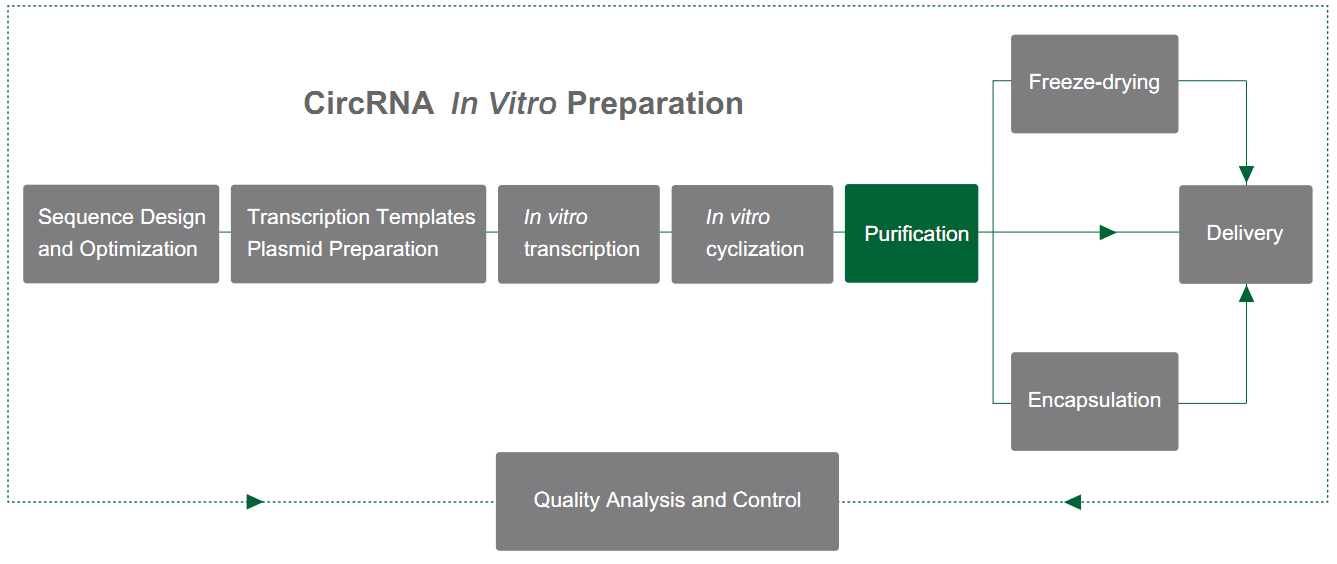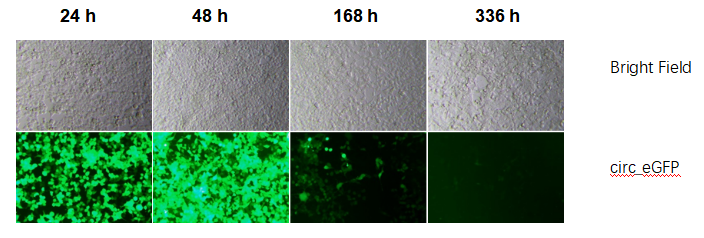The products obtained by in vitro cyclization and RNase R enrichment require further removed from in vitro transcription (IVT), including unconsumed substrates in cyclization reaction, reaction by-products and nicked RNA.
Yaohai Bio-Pharma has mature LiCl precipitation, magnetic bead purification, self-developed purification and other diversified purification solutions to effectively remove various impurities and prepare highly pure circRNA.

- LiCl precipitation method
Purification solution for small amounts of circRNA for cell transfection and as part of animal experiments.
- Magnetic bead purification method
Purification solution for small amounts of circRNA for cell transfectionand as part of animal experiments.
- Yaohai Bio-Pharma purification solution
Application scenarios with higher quality;
Stable and scalable purification process to meet GMP production requirements.
Services Details
| Process |
Optional Service |
Service Details |
Delivery Period (Day) |
Deliverables |
| circRNApurification |
Conventional purification solution |
Lithium chloride precipitation |
1 |
circRNA drug substance |
| Magnetic bead purification |
| Highly pure circRNA purification |
Preparative high-performance liquid chromatography (HPLC) |
1-2 |
| Buffer exchange |
Ultrafiltration |
1 |
| circRNAquality control |
Concentration /purify |
Ultraviolet (UV) spectrophotometry |
0.5 |
Test report |
| Purity |
Agarose gel electrophoresis (AGE)/E-gel |
| HPLC-optional |
1 |
Our Features
- A variety of purification options
Application scenarios can be achieved.
circRNA with a purity of more than 90%;
- Stringent control of RNase
Through stringent control of RNases in the experimental environment and consumables, RNA degradation is effectively prevented.
Case Study
Yaohai Bio-Pharma has established a mature circRNA purification solutionthat can effectively remove various process-related impurities.
The circular RNA products purified by the conventional solution are still obviously mixed with nicked RNA and introns.
After the purification solution developed by Yaohai Bio-Pharma, various linear RNA impurities, such as nicked RNA and introns, can be successfully removed.

circRNA Expression Validation
Using a conventional liposome, purified eGFP circRNA is transfected into 293T cells, and a fluorescence signal is observed after 24 h and continues to be enhanced at 48 h. The fluorescence signal can still be detected on the 7th day and the 14th day after transfection.


 EN
EN
 AR
AR
 HR
HR
 CS
CS
 DA
DA
 NL
NL
 FI
FI
 FR
FR
 DE
DE
 EL
EL
 IT
IT
 JA
JA
 KO
KO
 NO
NO
 PL
PL
 PT
PT
 RO
RO
 RU
RU
 ES
ES
 SV
SV
 IW
IW
 ID
ID
 LV
LV
 LT
LT
 SR
SR
 SK
SK
 SL
SL
 UK
UK
 VI
VI
 ET
ET
 HU
HU
 TH
TH
 TR
TR
 FA
FA
 AF
AF
 MS
MS
 BE
BE
 MK
MK
 UR
UR
 BN
BN




